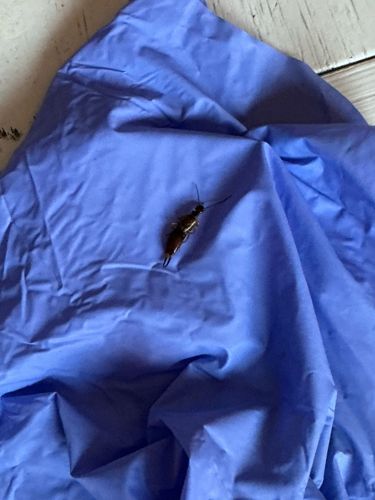Earwig
Scientific Name: Forficula auricularia (Common Earwig) or other Dermaptera species
Order & Family: Order: Dermaptera, Family: Forficulidae
Size: Typically 0.5 to 1 inch (1.2 to 2.5 cm) in length.

Natural Habitat
Damp, dark places such as under rocks, logs, leaf litter, mulch, flowers, or in crevices. They often enter homes in search of shelter or food.
Diet & Feeding
Omnivorous. They feed on decaying organic matter, fungi, plants (leaves, flowers, fruits), and small insects (aphids, mites, insect larvae) and eggs.
Behavior Patterns
Nocturnal; active at night. They are known for their pincers (forceps) at the rear of their abdomen, used for defense, apprehending prey, and folding their wings. Females are known to exhibit maternal care, guarding their eggs and nymphs.
Risks & Benefits
Potential risks: Can cause minor damage to garden plants, fruits, and vegetables. Though their pincers can pinch, it's rarely painful or breaks the skin. The myth that they crawl into people's ears is largely unfounded. Potential benefits: They can be beneficial predators of small garden pests like aphids and mites, helping to control pest populations.
Identified on: 9/21/2025